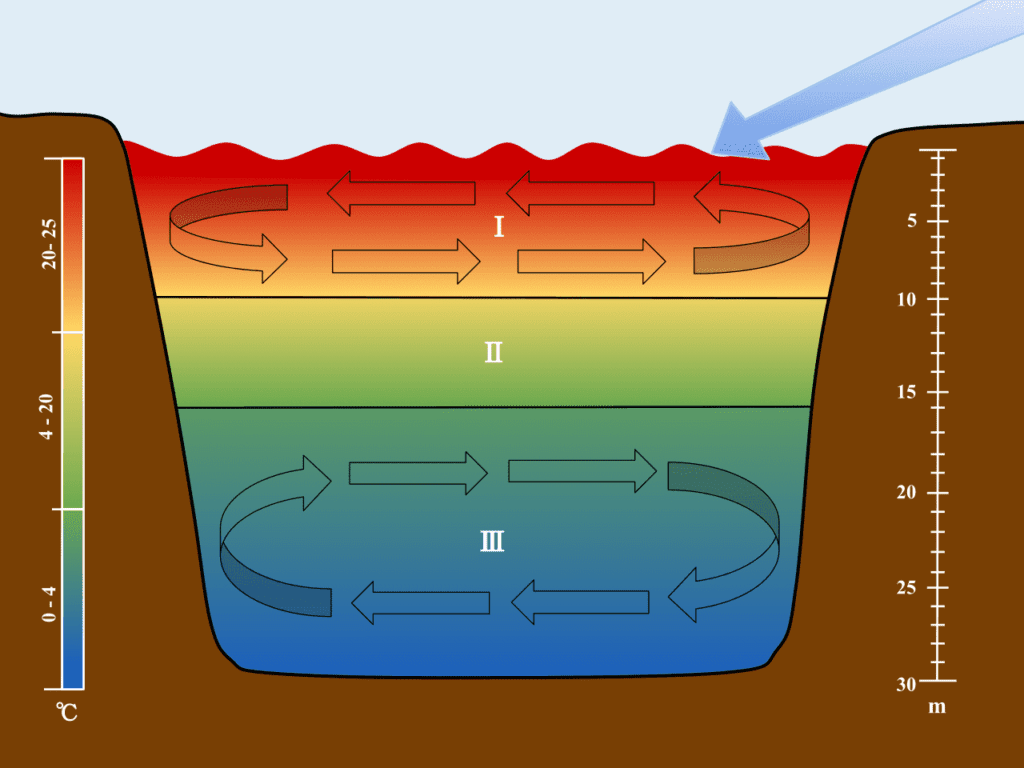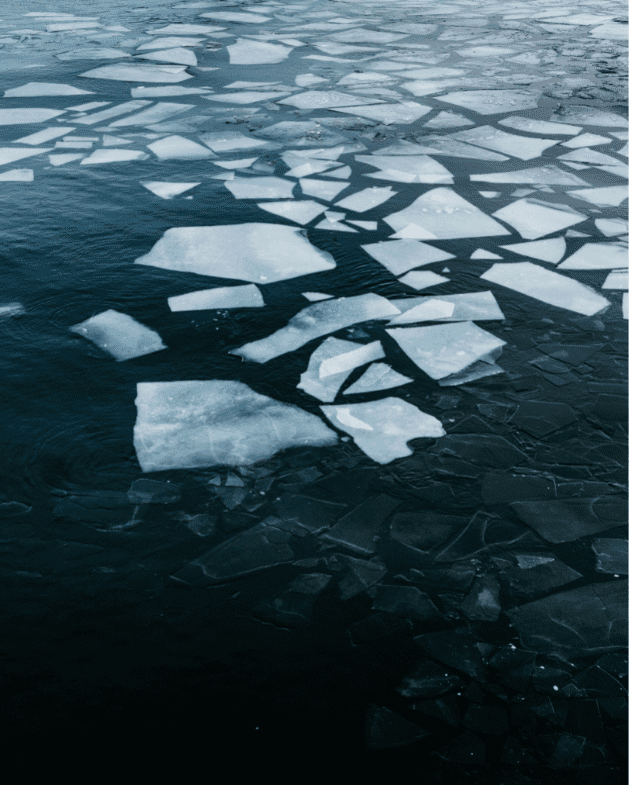I wrote an article in spring 2020 explaining lake turnover. It’s one thing to know that Lake Maxinkuckee is a dimictic lake, meaning it turns over two times per year with the seasonal temperature changes of spring and fall, but have you considered why that matters?
FALL TURNOVER
When surface water reaches about 50 degrees Fahrenheit in the fall, it becomes as dense as deeper water and sinks. The downward movement of surface water forces deeper water upward. The water begins to circulate, and this is called fall turnover.

Here is a great video demonstrating that phenomenon.
NALMS Student Video Series #2: Lake Mixing & Stratification – YouTube
WHY TURNOVER MATTERS
Lake turnover is extremely important in freshwater lakes as it is responsible for replenishing dissolved oxygen levels throughout the lake. When the lake is stratified in the summer months, the colder deep water (the Hypolimnion) is very low in oxygen. Once turnover occurs and the lake Is uniform in temperature and density, it takes very little wind energy to circulate the water. Wind moves the surface water, which is highly oxygenated, to the lake bottom, forcing low oxygen water from the lake bottom up to the surface, where it becomes saturated with oxygen.
This mixing is critical for aquatic organisms to survive the winter, as once the lakes freeze over, no new oxygen gets mixed into the lake from the atmosphere, and what is in the lake must last until ice melts off in the spring. Oxygen levels get even more depleted if the lake is ice covered with snow. This prevents sunlight from penetrating the water, thus slowing oxygen production by aquatic plants. Under these conditions, oxygen levels can become even more depressed. This is one explanation for the dead fish we see every spring, which is very likely from depleted oxygen levels before spring turnover.
DID YOU KNOW?

Most compounds, when changing from liquid to solid, become heavier. NOT WATER! When water (liquid) freezes to ice (solid), it floats. This is because ice is less dense than water. If not for this unique property, lakes would freeze solid from the bottom up, and there would be little if any chance for living things to exist in them.
“A lake is a landscape’s most beautiful and expressive feature. It is Earth’s eye; looking into which the beholder measures the depth of his own nature.”
Henry David Thoreau

Hi, I’m Debbie Palmer. I received a BS in Horticulture from Purdue University. Here at LMEF, I am responsible for outreach presentations, monitoring the lake and it’s wetlands, project manager for restoration and research projects, and act as a community resource for all things related to the well-being of Lake Maxinkuckee and its surrounding watershed. I completed Indiana Watershed Leadership Academy, volunteer with the Indiana Clean Lakes Program, Hoosier River Watch and Marshall County Lakes and Waters and serve as a Board Member for Indiana Lakes Management Society.


Recent Comments